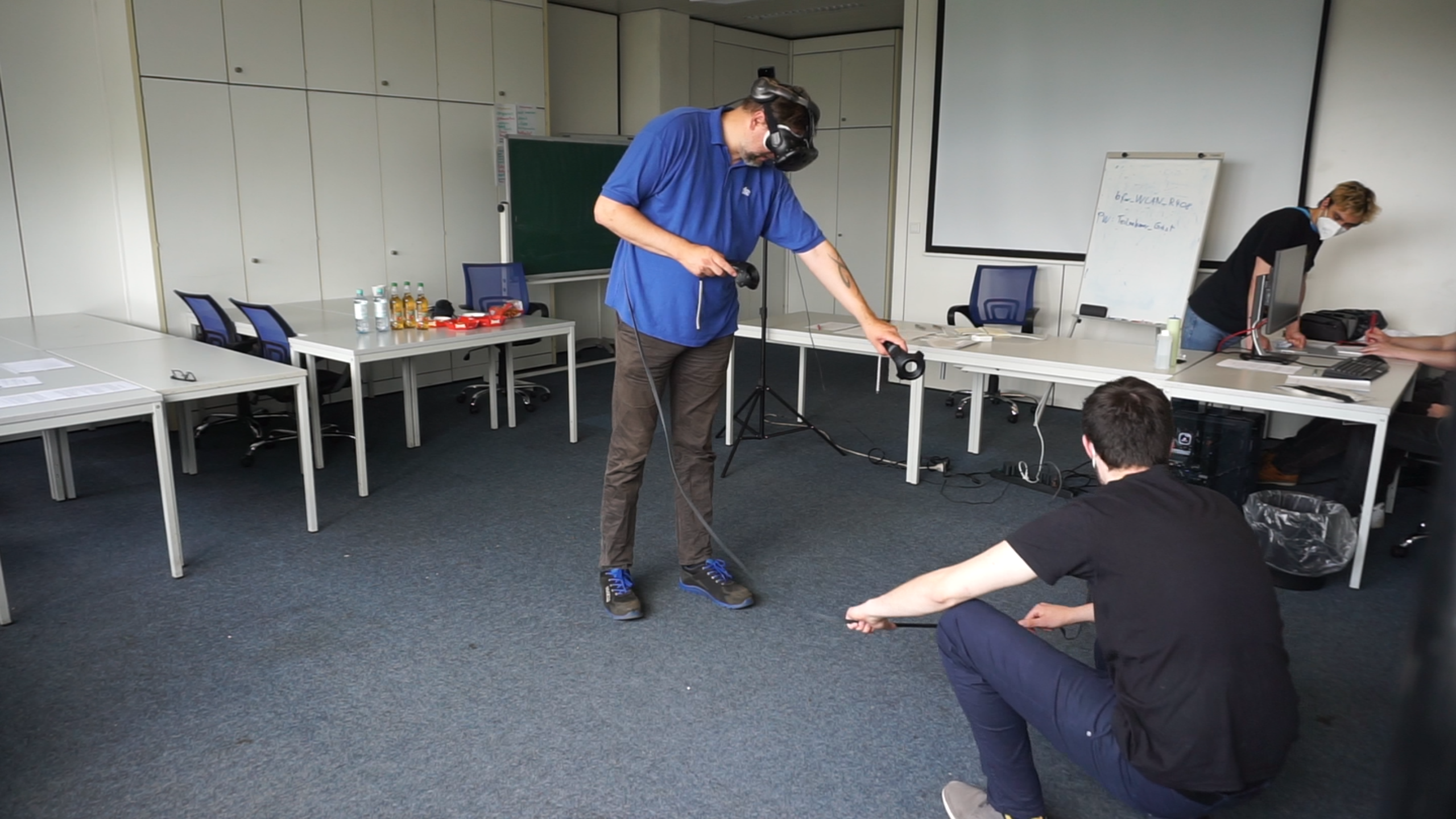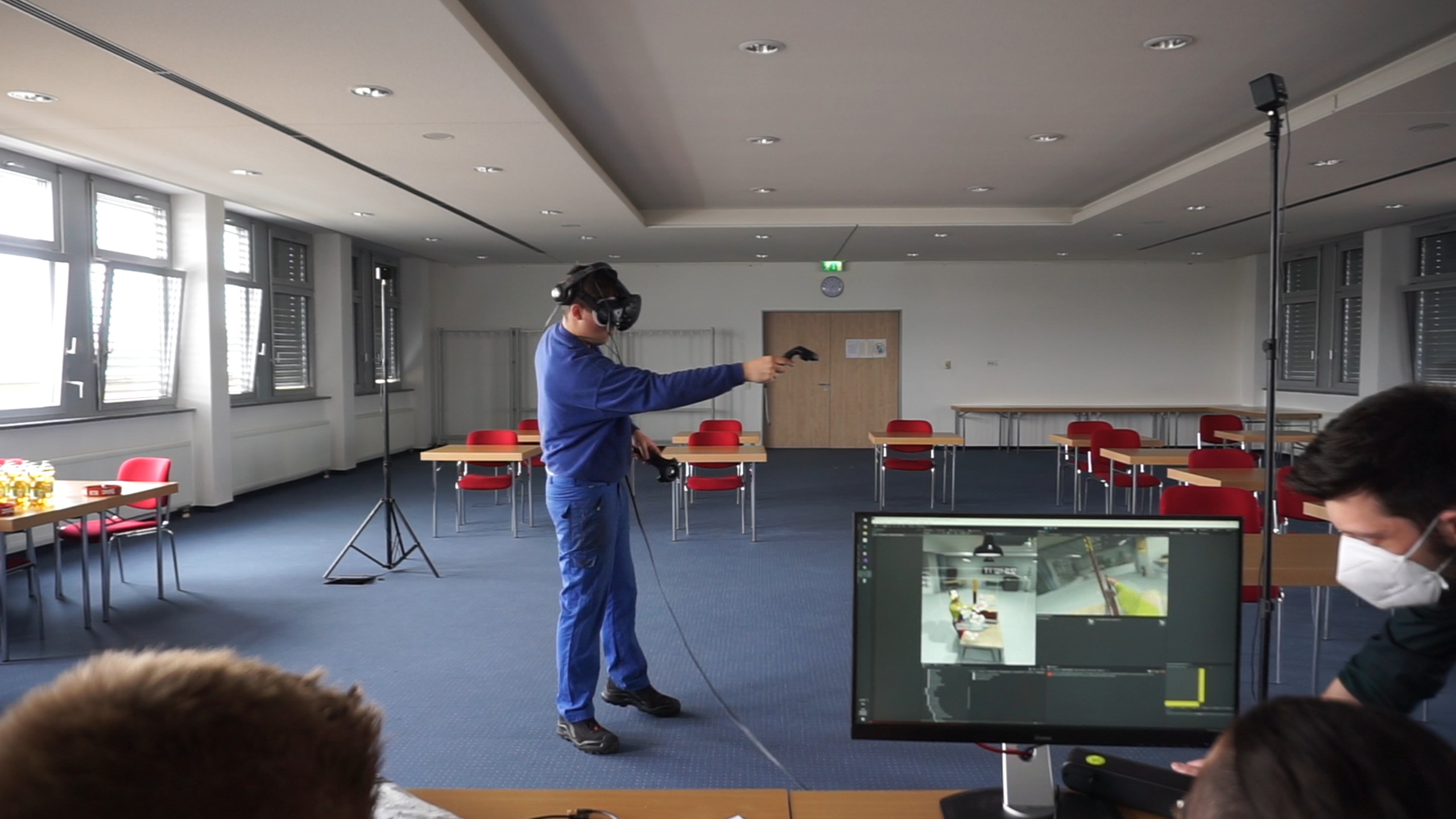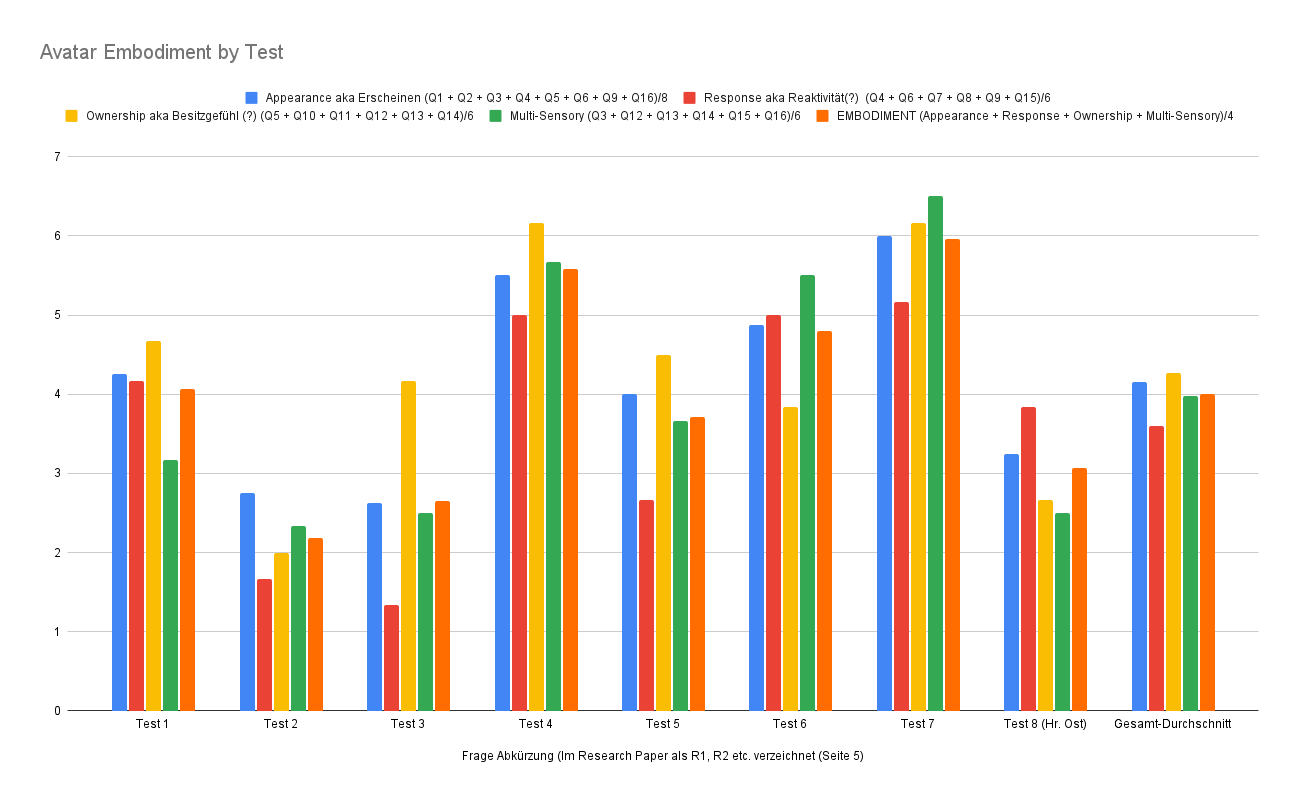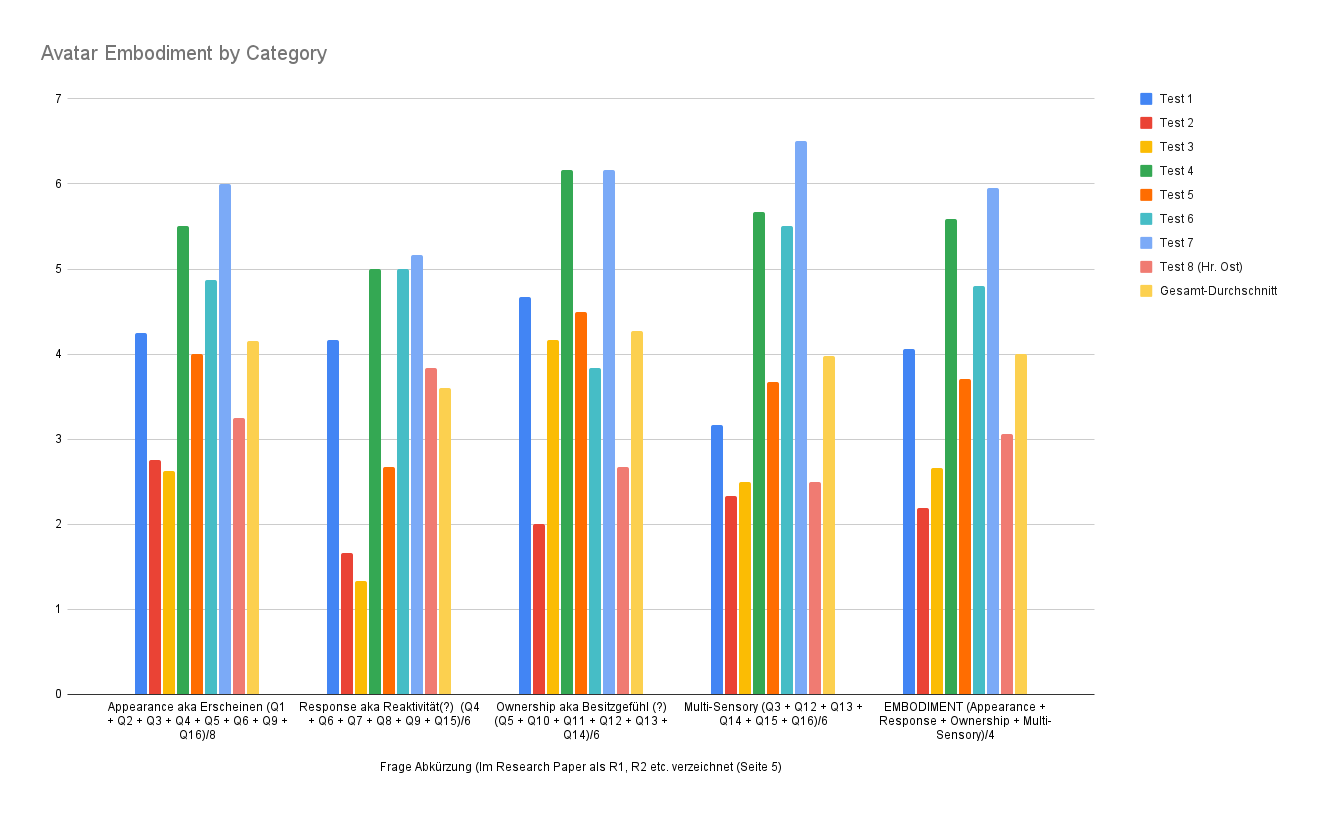Continuing our project allowed us to both reflect on what we had set out to make, what we had made so far, and what we thought would most effectively enhance our product in this second round of development. So far we had made a scene to work in as well as the tools and injuries that can occur from improper use.
The following two questions kicked off the start of this new project iteration:
Question 1:
How can accidents be provoked to mimic how they happen in real workshops?
If we could answer this question, we would be pinpointing the snapshot in which human error occurs, the critical moment which can then be examined, discussed and highlighted for educational purposes.
The approach we pursued was based on feedback we got from our partners last semester: through distractions. One of our first steps was accordingly to more clearly understand what kind of mental state workers are in when lapses in judgement, or moments of carelessness or distraction lead to injuries. For this, we did literature research on workplace psychology and how injuries occur, and did user research involving our industry partners.
We found several papers (Distractions in the workplace revisited, The Distracted Worker) that indicated factors including time pressure, environmental distractions, psychological factors such as fear of failure are among the worst culprits. We also figured out that auditory distractions in particular seem to be one of the most disruptive factors in an open-plan workplace. Once we had collected this spectrum, we considered how each could be realized within our capacity, and a selection of elements emerged.
Question 2:
How can we make the overall experience (especially the injuries) more impressive?
Our research around knowledge retention, immersion and experience impression continued. We still consider these critical to the creation of a long-lasting and memorable learning experience, and saw potential to improve our product with regard to them. In this research phase, we learned about Body Ownership Illusion (BOI), a phenomenon where a person perceives ownership over non-bodily objects, such as artificial limbs. This phenomenon has been exploited in research (The building blocks of the full body ownership illusion, A threat to a virtual hand elicits motor coretex activation) to demonstrate how the creation of this illusion greatly enhances a user’s experience in virtual reality. Our focus on BOI later shifted to the more narrowly defined and more applicable Avatar Embodiment, a term used to describe the effects of VR self-avatars on its users (Avatar Embodiment. A Standardized Questionnaire).
Regarding the injury depiction we chose to maintain what we had already made. According to feedback towards the visual level of detail we have found a balanced point in between a tolerable and a visually impressive experience.




